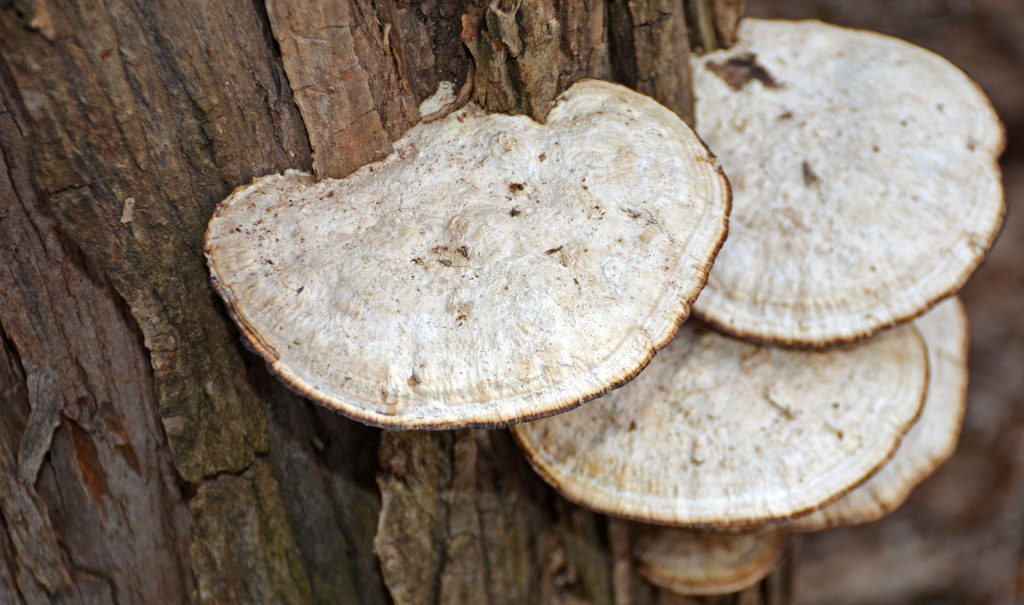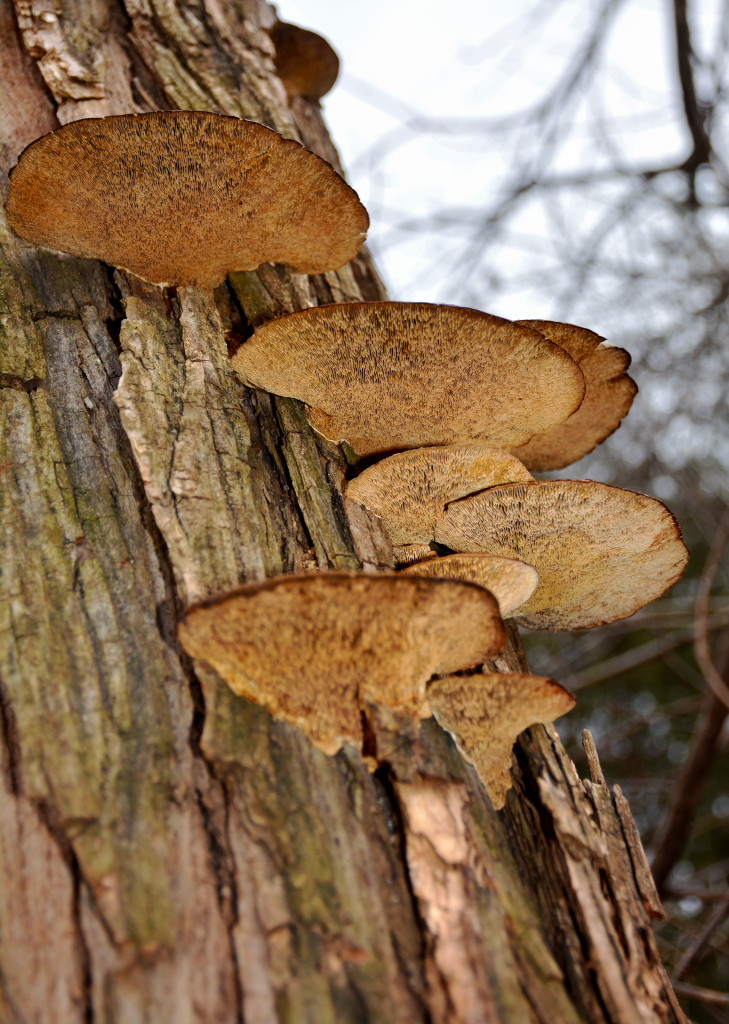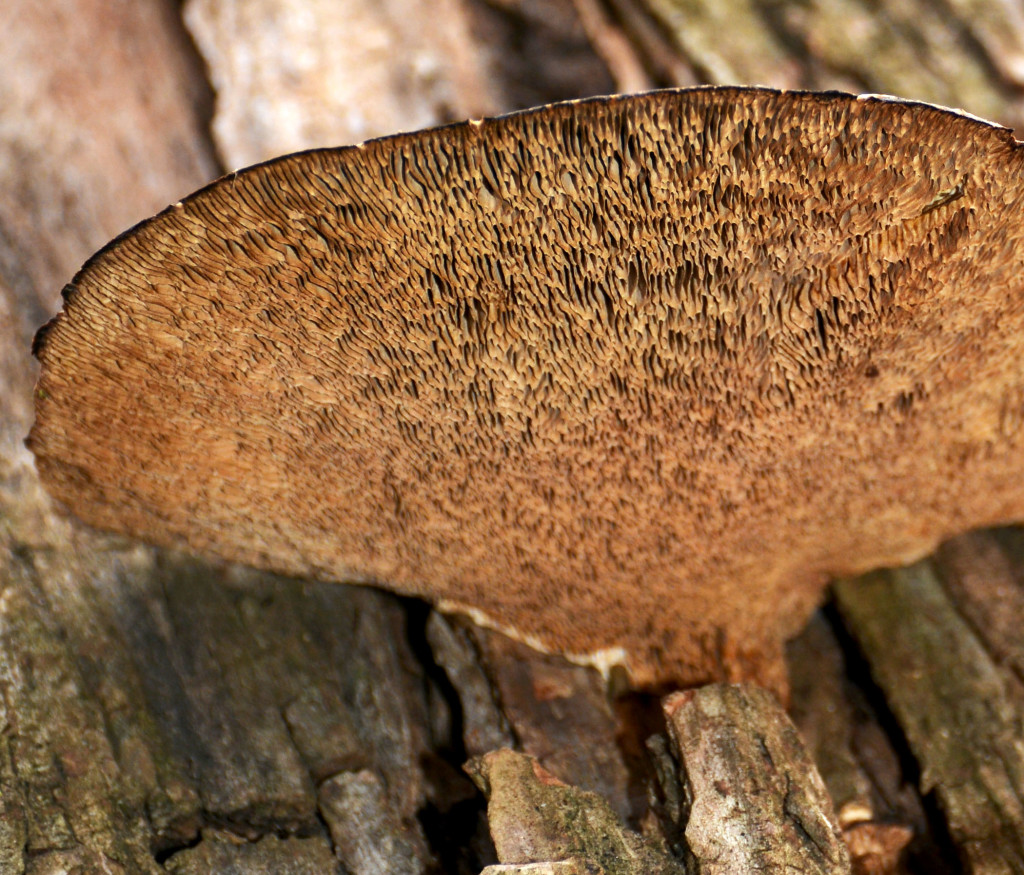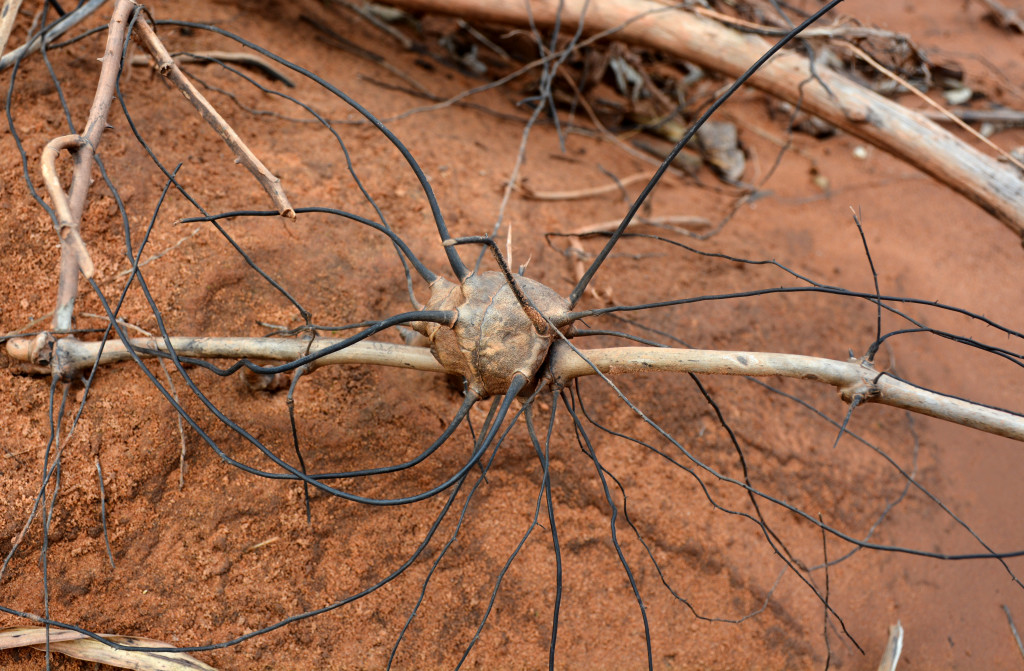A chilly 32°F. No wind. Overcast. 
We got a bit of precipitation this week, but it is still very dry out and there is a high fire danger alert.
This deer became a meal not too long ago. I always wonder why coyotes (I’m assuming) leave things in the middle of the hiking trail. I step over bones and scat regularly. I can see animals leaving scat as a form of territorial marking, since dogs and people walk on the trail regularly. Maybe the trails are a good place to eat since there is no tall grass or shrubs. Maybe they are showing off.
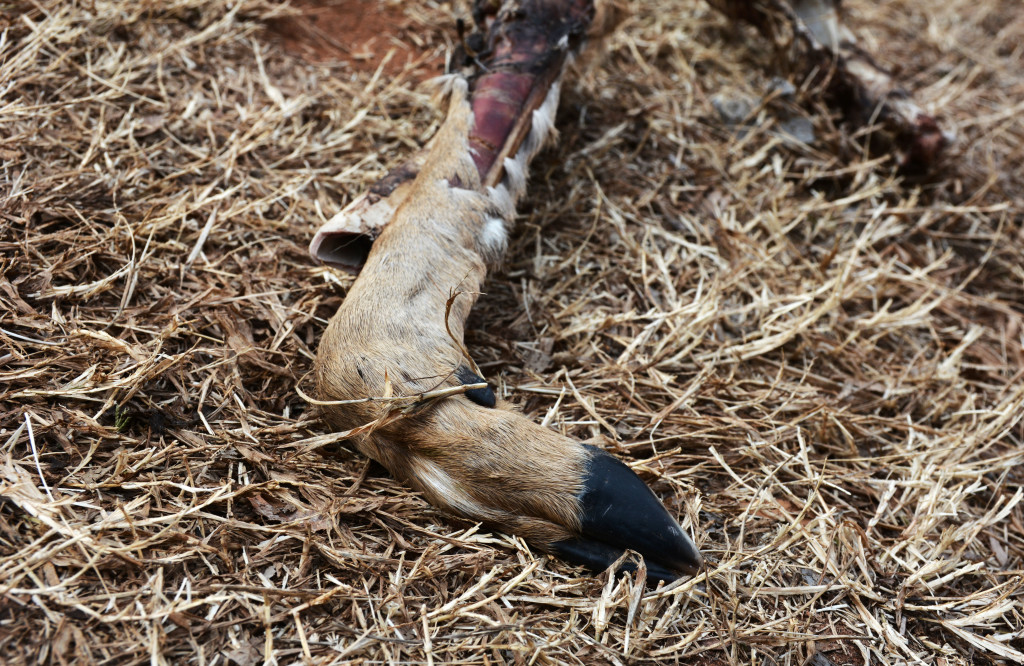
Since I had fun exploring the creek bed last time, I went back to check for fresh animal tracks. I’m determined to learn and recognize most common tracks. I believe the track below is from a skunk, it’s long sharp claws look like they could do a lot of damage.
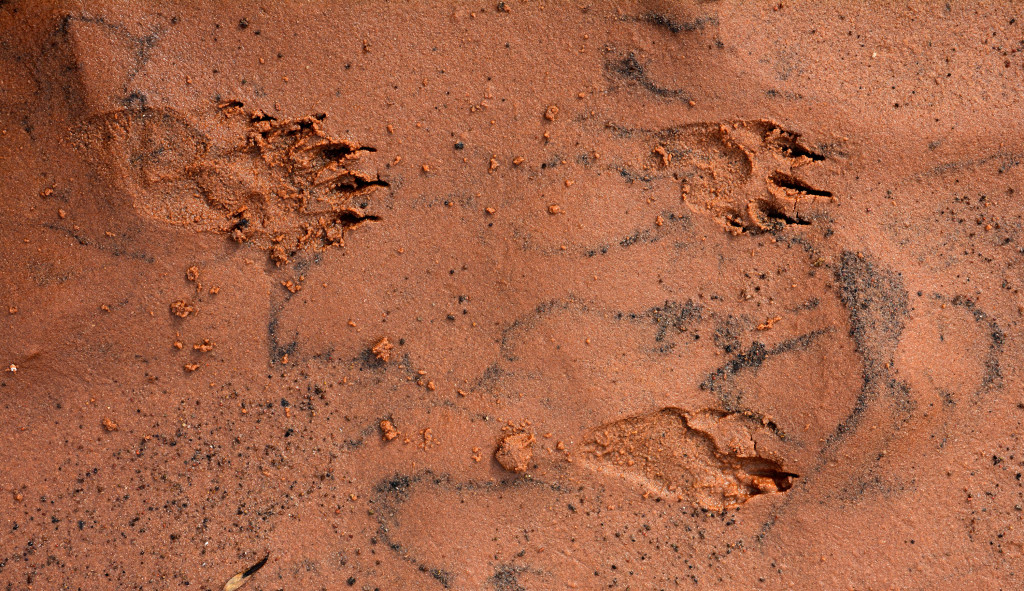
Kim at www.bear-tracker.com confirmed the track below is from a bobcat. It is 2″ in size. She said this is the right front paw, showing a carpal pad – the single round print showing behind the main paw.
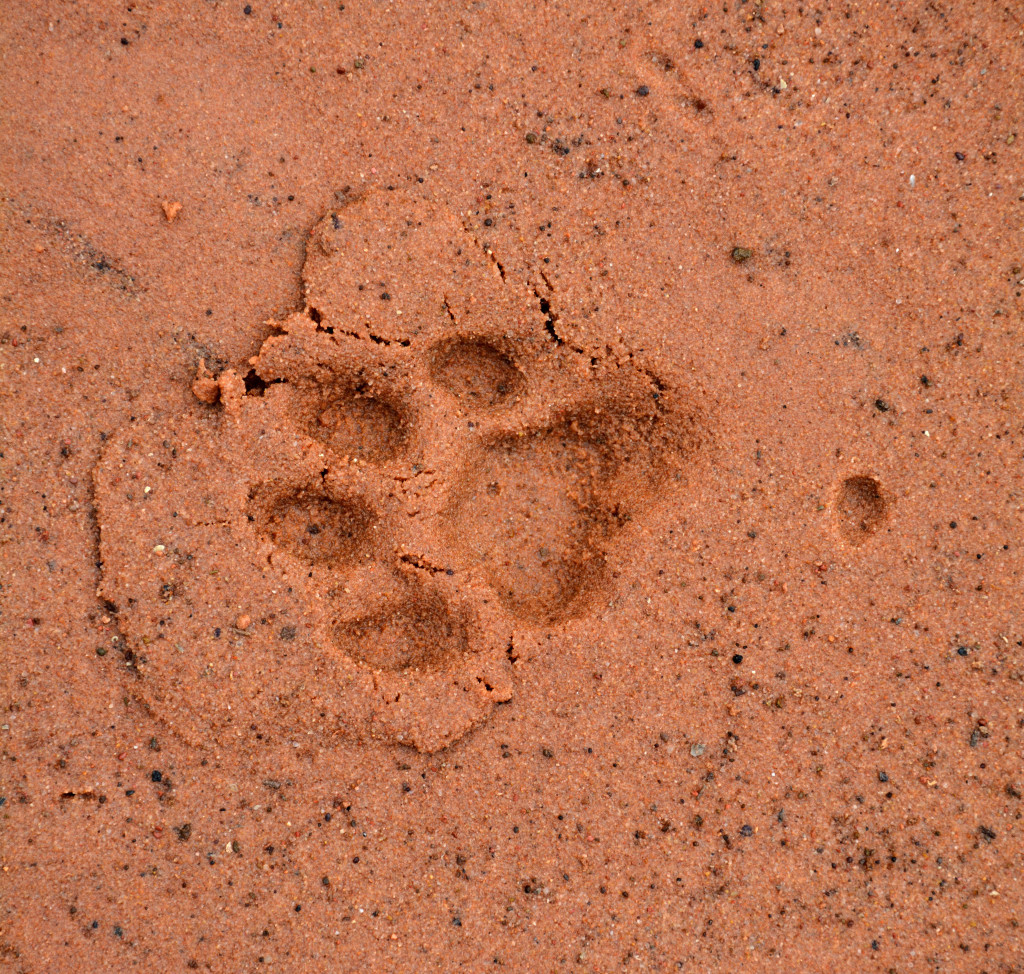
My best guess, based on size and shape, is coyote scat. Looks like it ingested some persimmons, grass and its own hair. I didn’t see any tracks around it, but it’s probably been there more than a few days.
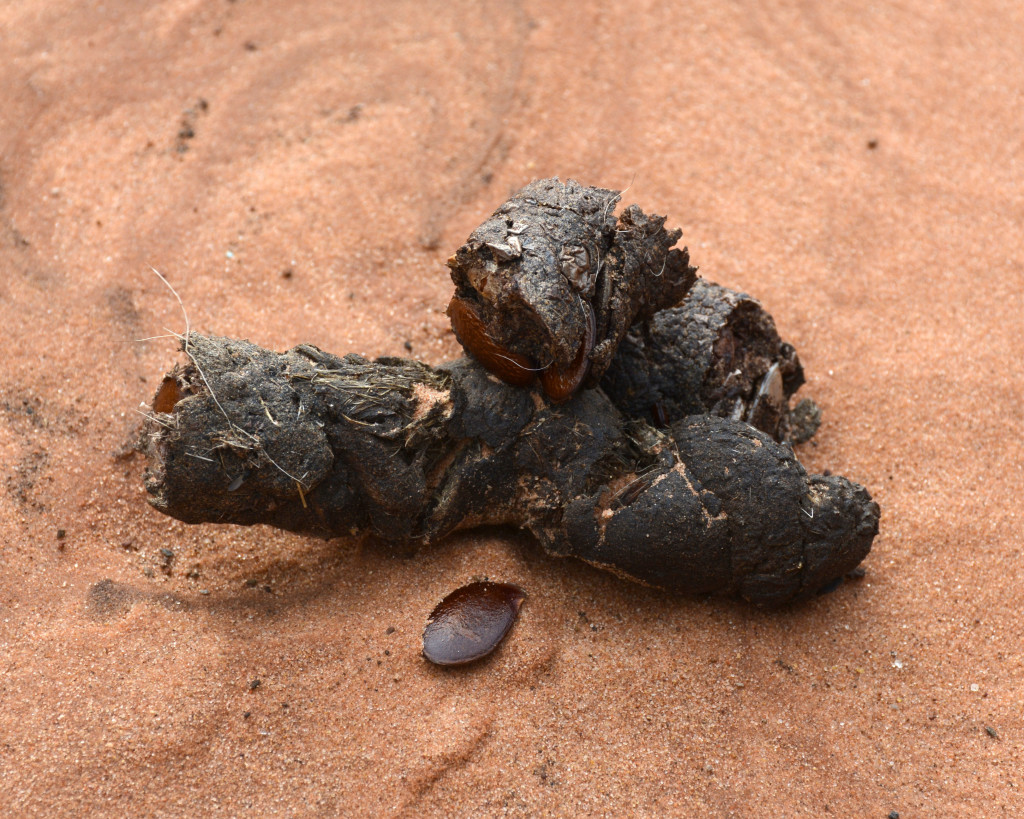
The tracks below looked like raccoon, but I was curious about what I thought looked like hair or quill imprints all around. I thought it might be a porcupine or something else that could make those marks. Obviously I needed professional help. I sent an email to www.bear-tracker.com and received a quick response. Bear-tracker confirmed it is a raccoon print and “The stuff that looks like hair prints all over is an effect that happens when you get a freeze, then a thaw. These marks are actually made by the ice and left behind when it melts.” Who knew! It is so nice to learn from the pros.
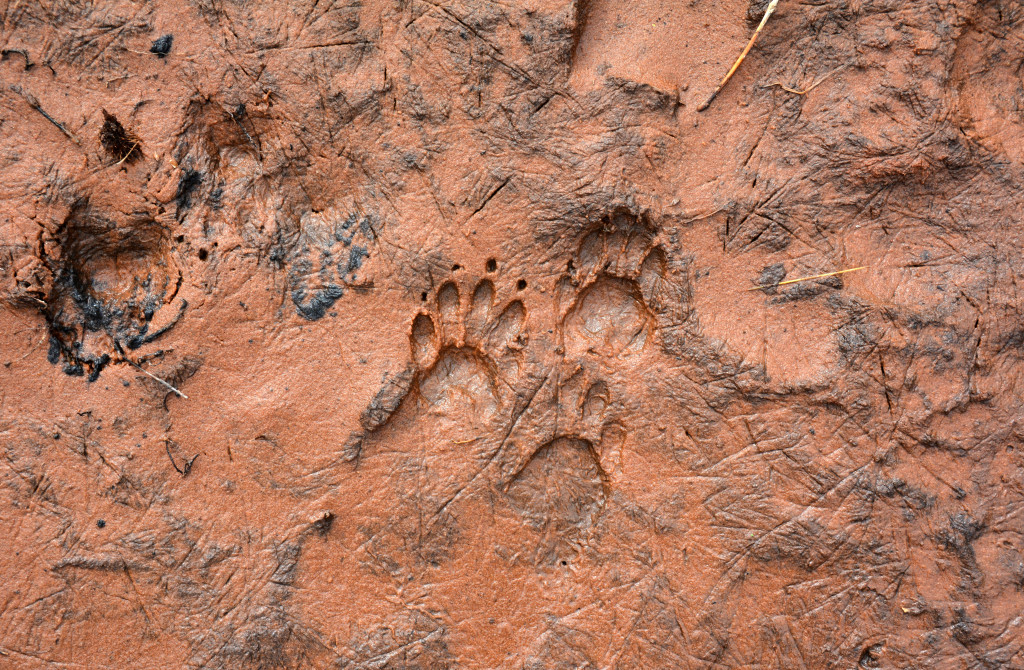
The neatest thing I saw in the creek bed today was this awesome root! I am still trying to identify it, but who cares – It’s cool! It appears to be a water plant of some sort with a segmented stem with rooting occurring at the joints. It appears it can make new plants by forming new roots at each segment, and in theory, sending up a fresh new plant from that root. Since it is winter and there is no foliage it is hard to identify, but it is my new favorite!
Update: I was told by the OSU OKC Master Gardener program that belongs to the Smilax Genus (greenbrier family). I have had many a battle with clearing greenbrier in the past and I have scars to prove it. I guess I can still enjoy it in its dormant state!
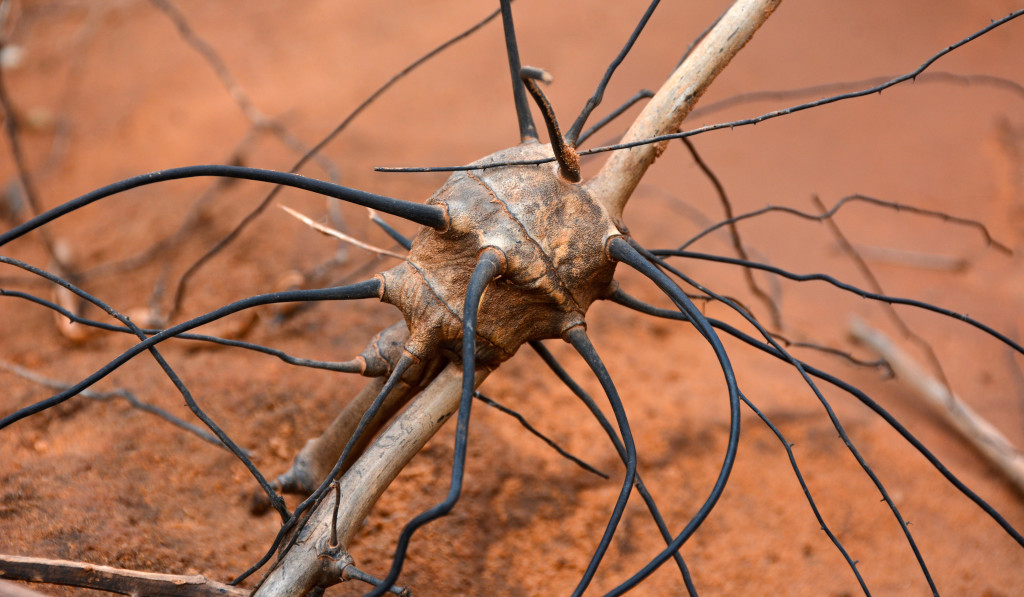
The sandy banks in this area are eroding and in very interesting ways.
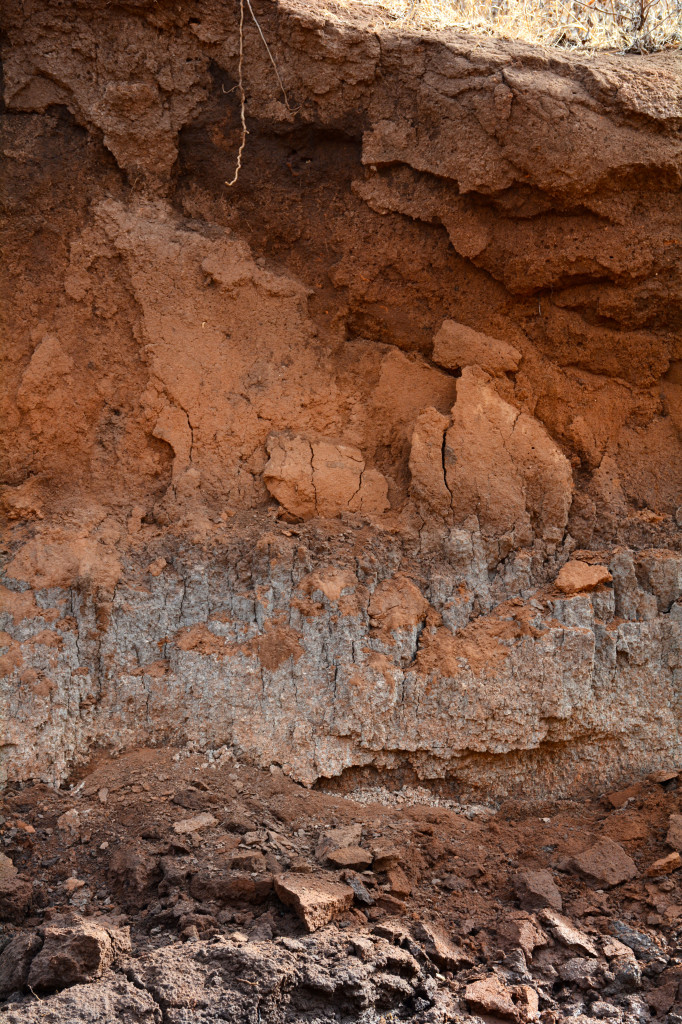
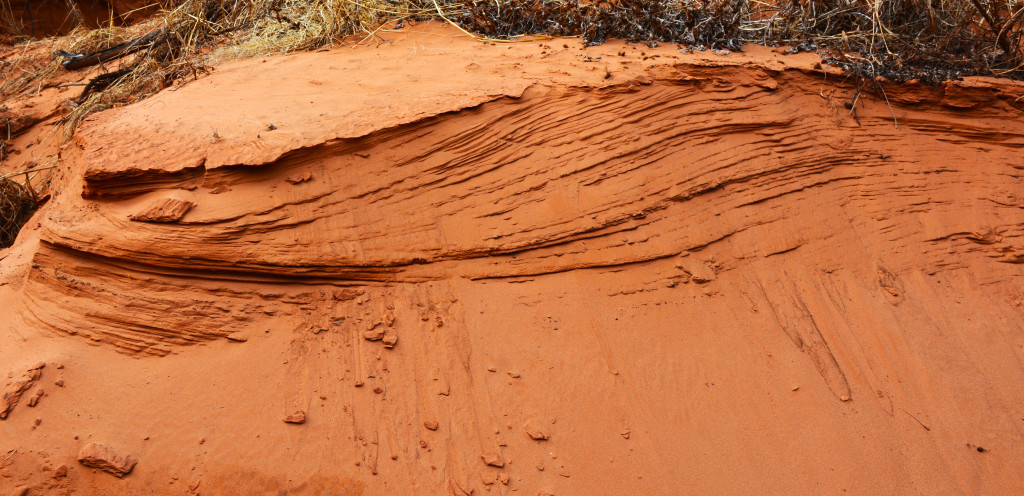
On my hike back to the car, I spotted some dry fungi covering a tree. They are white on top so I was really surprised I’d never noticed them before since they are clearly visible from the trail. May be a Maze-flat Polypore Mushroom, Daedaleopsis confragosa
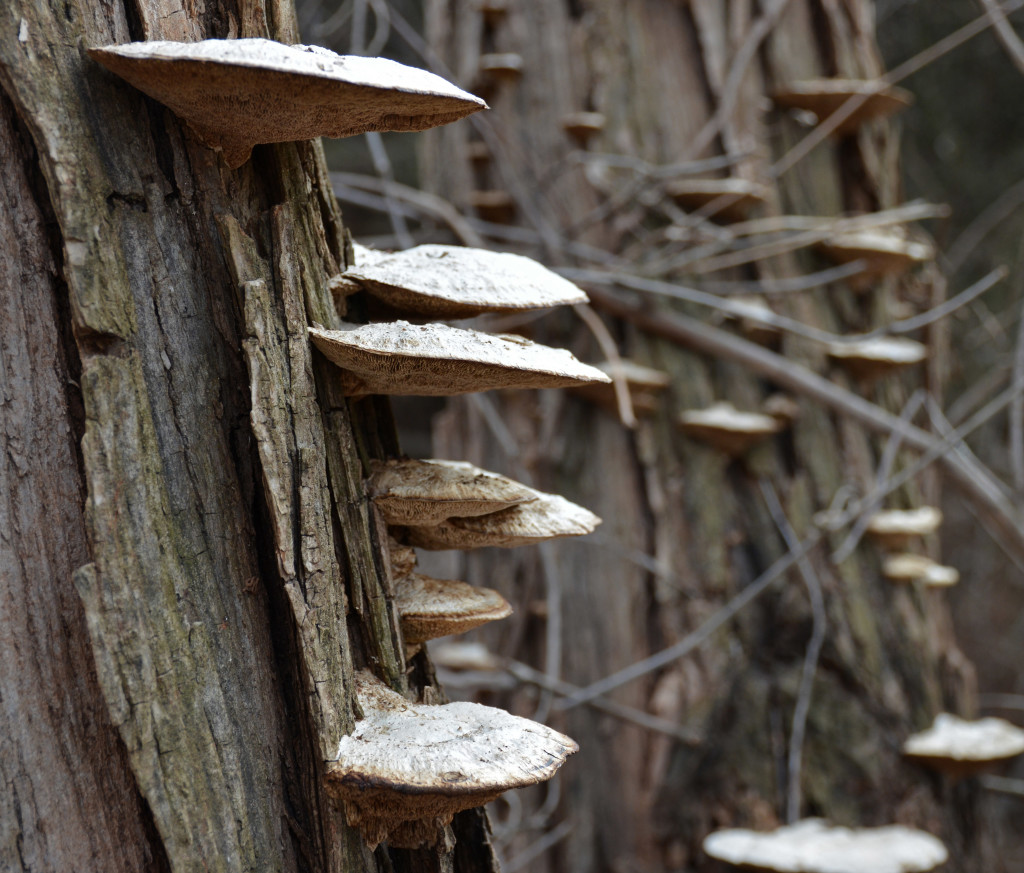
Here are some more detailed photos including some of the underside.
